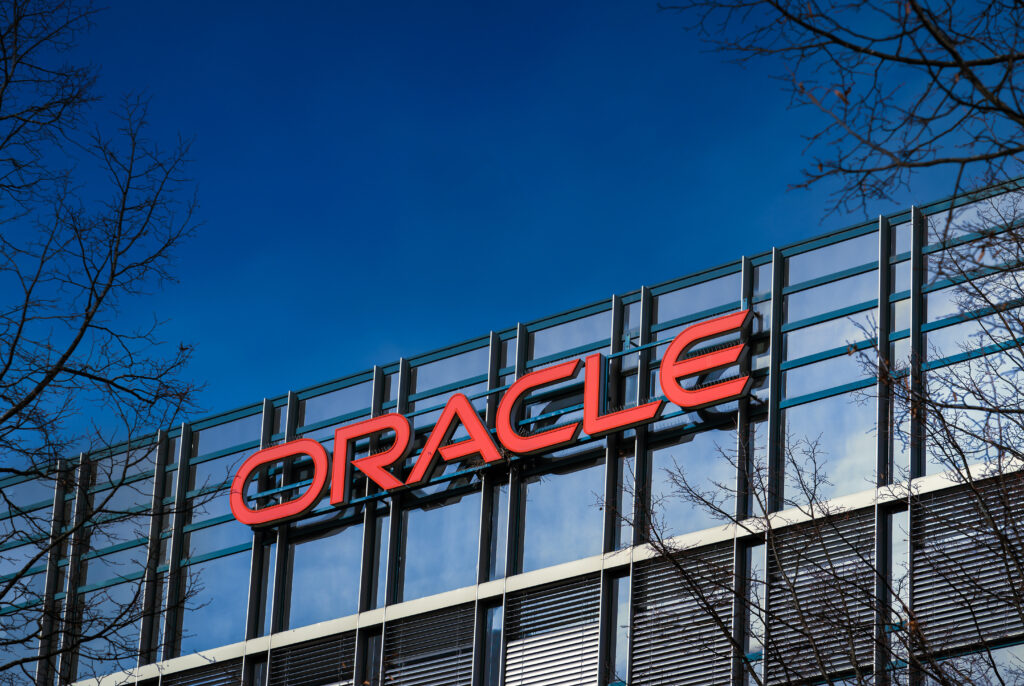
In a fascinating discussion centered on ensuring that transformations are focused on business outcomes rather than technology swaps, the CFO of the London Stock Exchange Group told Oracle CEO Safra Catz the exchange’s big prize has been its ability to “create faster revenue outcomes.”
Efficiency is great, Manz said, and the exchange’s business-driven transformation will certainly generate plenty of that, but the real benefit will be providing the entire organization with real-time data to power revenue growth.
Sharing her story as part of Catz’s keynote presentation at Oracle CloudWorld London this week, London Stock Exchange Group CFO Anna Manz said, “We’re effectively now a fintech business, and the pace of product change is already fast, and I think the other big enabler is building this right will allow us to automate all of that.
“And yes, we’ll get the efficiency benefit, but the bit I’m really excited about is the embedding of the behaviours across the business in how we work and make decisions to create those faster revenue outcomes.”
Those are words that every business leader should write on her/his palm in permanent ink: The goal of transformation is to embed behaviors that drive more revenue more quickly!
Catz, having led a similar overhaul at Oracle earlier in her career, was certainly in total agreement with Manz.
“That’s the gold star!” exclaimed Catz, the Cloud Wars CEO of the Year for 2022.
“In the 20th century, finance was about what I would call sitting in the back seat of the car looking backwards and writing down what happened. The world is now about sitting in the navigator seat as part of the business explaining what’s profitable, and where should you invest more to get revenue, all of that.”
The larger point here is that in today’s world of customer primacy, businesses have to constantly adapt to new customer requirements, expectations, and demands. And that means every member of the C-suite must be not only “customer aware” but also revenue-driven — the old days of trying to hide behind “I’m just a back-office operations person” are gone, and they are not coming back — ever — because that mindset isn’t just outdated — it’s deadly.
Our friend Christopher Lochhead of Category Pirates has recently been leading on LinkedIn a masters-level class on how CMOs need to be all-in revenue drivers. The same holds true for CIOs and CTOs, and Manz, in her conversation at CloudWorld with Catz, made an eloquent case for why CFOs need to lock into the mindset as well.
“We’ve really spent quite a lot of time over the last 18 months going slow to go fast,” Manz told Catz.
“And what I mean by that is if you don’t know how you want to run the business, it’s very dangerous to embark on a transformation journey. And so the work that we’ve been doing has been to really make sure we understood our customers’ needs all the way back to the data and insights we needed to run our business to then actually change our processes and the systems that enable those. And that is what we are currently working through and it’s really exciting,” Manz said.
“This is not a systems change — no, this is a change in how we run the business. And so it started with understanding our data, and I know this sounds silly, but we had multiple definitions of what a product is. In fact, when we started the conversation, elements of the business were in an uproar in the debate about how you might describe what a product is because it goes right to the heart of your commercial model and how you sell,” Manz said.
“And so as we have thought through that, ready to configure a system and the process that delivers on it, it’s also making us think through where are businesses evolving to? So beyond data analytics and SaaS products and workflow, how do we construct how we’re thinking about products in order to be able to evolve to meet those needs?”
Those are some great perspectives — and remember that they’re coming from the CFO of a 322-year-old global financial services organization charged with pulling the exchange fully into the digital future.
“Those are really big questions — and they’re not finance questions,” Manz said.
“They go right to the heart of the business we’re trying to build, and you need to know the answers — otherwise you build the wrong thing. So I think some of the work that we’ve done to understand products and customers, some of the work that we’ve done to understand what our key KPIs are and how they will deliver value is already allowing us to actually accelerate revenue and deliver cost savings. But that is through the understanding and the behavioural change that’s gone with that ahead of actually being able to configure it into a system.”
Underscoring the strategy laid out by Manz, Catz drew on her 24 years at Oracle which have included stints as CFO, president, and for the past several years as CEO.
“Everything you’re saying is like a road I’ve walked, and I recognise every stone on this road because we too at Oracle, many years ago, we also thought this is an IT project. And we realized no, no, it’s a business transformation. And if all we had wanted to do was automate our existing processes, that would’ve been a complete waste of time and resources,” Catz said.
“We had to learn what we needed in our business, what our business really was, and then automate that and be able to do more and spend less doing it. And actually that’s the part when you understand your business and you free up resources.”
Catz then asked how that heavy work over the past 18 months has been paying off for customers of the London Stock Exchange, and here’s the key part of Manz’s response.
“The efficiency piece is the more obvious bet. I have got multiple systems and processes today and I have got multiple teams doing low-value work. And actually in today’s world, it’s really hard to keep recruiting because the labour market is such that if your work is low-value and frustrating, people will go to another company,” Manz said.
“So there’s a very clear goal for us around removing some of this inefficient duplicative work which will not only make our lives easier, but it’ll make it far more seamless to our business customers because they’ll be interfacing with a single process.
“But I think the piece of the business case around this change that is harder to describe — but if you do it right, it is absolutely there — is the one around revenue acceleration,” Manz said.
And then she described the real payoff.
“Today, after 18 months of work, I’ve moved from a world of having to view revenue and costs separately to having customer profitability and product profitability. Prior to automating this, the army of people that it took to give us that data is significant and the pace at which we are able to take that data and use it to influence the business and drive better customer outcomes was too slow.” But now, as cited at the top of this piece, the London Stock Exchange Group has transformed its vision, its priorities, its processes, its behavior, and its technology to radically accelerate its growth opportunities.
As Manz said above, “The bit I’m really excited about is the embedding of the behaviors across the business in how we work and make decisions to create these faster revenue outcomes.”









